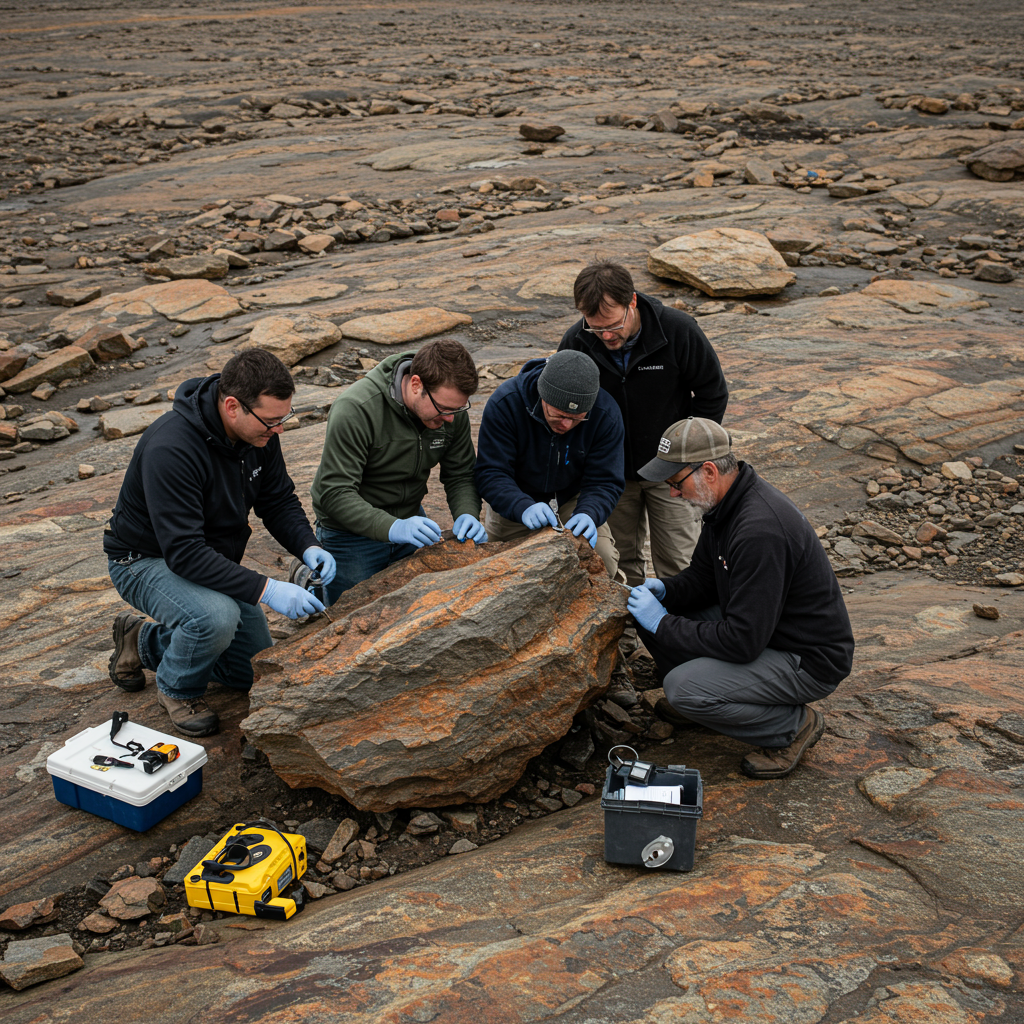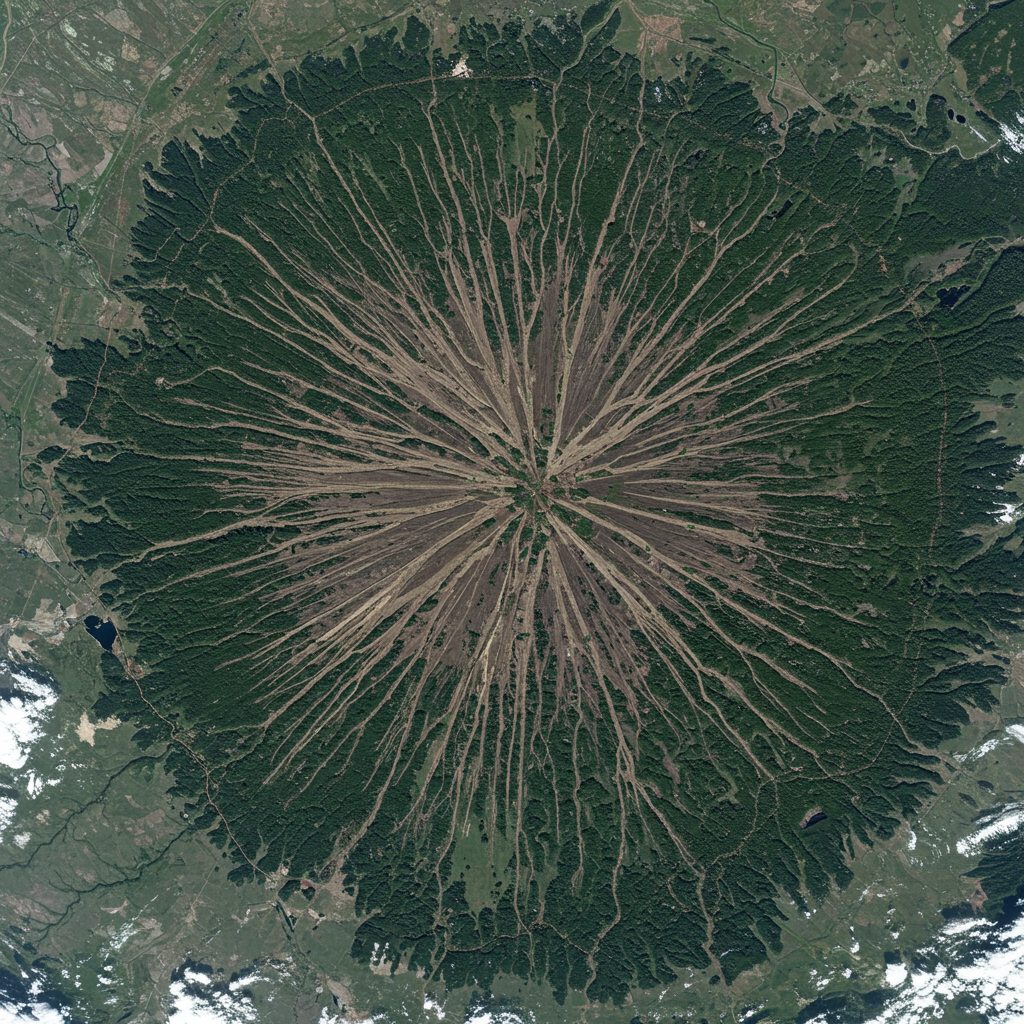Imagine a world before continents drifted, before oceans teemed with life, and long before the air was breathable. This is Earth’s violent, mysterious beginning, known as the Hadean Eon. Finding surviving pieces from this era is incredibly difficult. Our planet’s constant geological recycling usually erases its earliest history.
But now, scientists have confirmed a remarkable discovery. Deep within the ancient landscape of northern Quebec, a specific rock formation holds the key to understanding Earth’s first half-billion years. these rocks aren’t just old; they’re the oldest confirmed pieces of the planet’s solid crust ever found. This groundbreaking confirmation opens a rare window into a time lost to fire and fury.
Unearthing Earth’s Deep Past in Quebec
The incredible discovery is located in a remote region near the village of Inukjuak, part of the Nunavik territory in northern Quebec, Canada. Here lies the nuvvuagittuq Greenstone Belt. This unique geological formation has intrigued scientists for years. It seemed ancient, but confirming its exact age proved challenging.
A dedicated international research team tackled this puzzle. Led by Jonathan O’Neil at the University of Ottawa, their work centered on samples collected in the area. These samples possessed unusual properties that hinted at immense antiquity. Over 15 years, the age of the volcanic rocks in this belt was debated. Some early estimates even suggested they could be as old as 4.3 billion years. However, scientific consensus remained elusive.
The team’s meticulous efforts finally settled the debate. Their combined expertise in petrology, geochemistry, and advanced dating techniques proved crucial.
The Breakthrough: Dating the Intruders
Pinpointing the precise age of extremely old rocks is complex. Geological processes like heating and alteration can reset their internal clocks. The Nuvvuagittuq Greenstone Belt consists of transformed volcanic and sedimentary rocks. The key to resolving the age uncertainty lay not just in the volcanic layers themselves, but in younger rocks that cut through them.
Researchers focused on these intrusive rocks. These were formed from molten material that pushed into cracks in the older volcanic layers and solidified later. By accurately dating these intrusions, the scientists could establish a minimum age for the volcanic rocks they penetrated. Think of it like finding a younger tree growing through an older fence. The fence must be older than the tree.
The team confirmed that these intrusive rocks were 4.16 billion years old. This provided definitive evidence. The volcanic rocks of the Nuvvuagittuq Belt that these intrusions cut through must be even older than 4.16 billion years. This crucial step solidified the belt’s place in the Hadean Eon.
How Scientists Date Earth’s Oldest Rocks
Confirming such extreme age requires incredibly precise methods. Scientists use a technique called radiometric dating. This method relies on the natural, predictable decay of radioactive isotopes within rocks. It acts like a highly accurate geological clock.
For the Nuvvuagittuq rocks, the team focused on specific elements: samarium (Sm) and neodymium (Nd). Samarium is a radioactive element that slowly decays into neodymium, a stable element, over billions of years. Scientists know the exact rate of this decay.
When a rock first forms, it incorporates these elements. As time passes, the amount of samarium decreases, and the amount of neodymium increases due to decay. By measuring the current ratio of samarium and neodymium isotopes in the rock, scientists can calculate precisely how long the decay has been occurring. This tells them when the rock originally solidified.
The international team utilized not just one, but two independent isotope systems involving samarium and neodymium. Both decay chains function as separate clocks. When both independent methods yielded the same result – 4.16 billion years – it dramatically increased confidence in the age confirmation. This rigorous approach published in the journal Science provided the compelling evidence needed to settle the long-standing debate.
A Window into the Fiery Hadean Eon
The Hadean Eon, spanning roughly 4.6 to 4 billion years ago, was Earth’s turbulent origin story. It began with the formation of the solar system. Earth itself was a molten, hellish world, constantly bombarded by leftover cosmic debris. This included giant impacts, one of which likely ripped material away to form the Moon.
The surface was a churning ocean of lava. Volcanic activity was relentless. The atmosphere was noxious steam and gases, devoid of oxygen. Yet, amidst this chaos, the groundwork for a habitable planet was being laid. As the eon progressed, Earth began to cool. A solid crust started to form on the surface. Water, delivered by comets and released through volcanic outgassing, accumulated to form the first oceans. Evidence from ancient zircon crystals even suggests water might have been present earlier than once thought.
The Nuvvuagittuq rocks formed during this specific, critical period. Their confirmed age places them firmly within this “first 500 million years” of Earth’s history.
Why These Ancient Stones Matter
The significance of the Nuvvuagittuq Greenstone Belt extends far beyond its age. These rocks are incredibly rare survivors from a time when Earth was fundamentally different. Studying them provides scientists with unparalleled insights:
Continent Formation: They offer clues about how the very first continental crust began to form on a young, hot planet. Understanding these early processes is key to understanding Earth’s evolution.
Early Earth Environment: The composition and structure of the Nuvvuagittuq rocks reveal details about the conditions present before oceans, atmospheres, plants, and animals existed. They can help researchers reconstruct this alien environment.
Pre-Tectonic Processes: Interestingly, these rocks appear to have formed before plate tectonics became the dominant force shaping Earth’s surface. Evidence suggests processes like hydrothermal alteration – where hot seawater circulated through the crust – were crucial in forming these early landscapes. The Nuvvuagittuq Belt is cited as the earliest evidence of these pre-tectonic formations.
Origins of Life: By understanding the geological and chemical environment of the Hadean, scientists can gain insights into the conditions that might have potentially supported the emergence of life. Studying these rocks helps scientists envision the “environment from which life could have emerged,” as O’Neil notes.
Compared to other ancient finds, the Nuvvuagittuq rocks are particularly valuable. While tiny zircon crystals from Australia are dated even older (up to 4.4 billion years), they are just individual mineral grains. The Nuvvuagittuq Greenstone Belt is a large-scale formation, an exposed rocky landscape offering a much broader context for study. The next oldest large formation, Canada’s Acasta Gneiss, is about 4 billion years old, sitting right at the Hadean-Archaean boundary. Nuvvuagittuq stands alone as confirmed Hadean terrain.
Accessing and studying such unique sites comes with challenges. Research access to the Nuvvuagittuq site itself is currently restricted by the local Inuit community, managed by the Pituvik Landholding Corporation. This decision was made due to concerns about past damage from sample removal and reports of samples being improperly handled or sold. Future research relies on analysis of previously collected samples, a restriction supported by Jonathan O’Neil out of respect for the community and the need to preserve the site.
Frequently Asked Questions
How did scientists confirm the age of these ancient rocks?
Scientists used advanced radiometric dating techniques focusing on the natural decay of samarium into neodymium isotopes within the rocks. By measuring the ratio of these isotopes, they could calculate the rocks’ age. A key breakthrough involved dating younger, 4.16-billion-year-old intrusive rocks that cut through the older volcanic layers, proving the volcanic rocks were even older. Two independent isotope systems confirmed the 4.16-billion-year date for the intrusions, solidifying the age of the belt.
Where exactly were the world’s oldest rocks found?
The oldest confirmed rocks on Earth were found in northern Quebec, Canada. They are part of the Nuvvuagittuq Greenstone Belt, located near the community of Inukjuak in the Nunavik territory. This specific geological formation is the only place on Earth known to contain large-scale rock formations confirmed to be from the Hadean Eon, the first 500 million years of Earth’s history.
What makes the Nuvvuagittuq Greenstone Belt unique compared to other ancient sites?
Unlike tiny, older zircon crystals found elsewhere, the Nuvvuagittuq Greenstone Belt is a large, exposed geological formation dating to the Hadean Eon (4.16+ billion years). This makes it the only confirmed Hadean terrain. It also shows evidence of formation through hydrothermal alteration before the onset of modern plate tectonics, offering a unique view of early Earth processes not preserved in younger formations.
Tracing Our Origins
The confirmation of the Nuvvuagittuq Greenstone Belt’s age is more than a geological footnote. It’s a profound connection to our planet’s most distant past. These rocks are silent witnesses to Earth’s transformation from a violent, molten ball to a world capable of supporting life.
Studying these incredibly rare samples helps us reconstruct the environmental stage upon which the drama of life would eventually unfold. It deepens our understanding of how the continents we live on first began to assemble. This discovery, rooted in the remote wilderness of Quebec, helps trace the long, complex journey that led from a barren, fiery world to the diverse planet we inhabit today. It underscores the immense timescale of Earth’s history and the incredible resilience of geological processes that, against all odds, preserved these whispers from the dawn of time.




